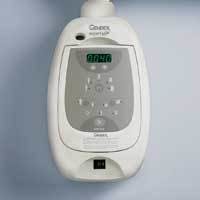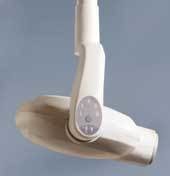Learn about dentistry from Thomas Edison
by Brad Durham, DMD
Let’s talk about “current” events - not the kind you read about every day in the newspaper, but the type that keeps our houses bright and our office equipment running smoothly. The history is quite electrifying, and involves the story of two inventors whose discoveries resulted in a “shocking” feud. It began about a century ago. In one corner is Thomas Alva Edison, whose many inventions, including the lightbulb and the electric motor, ran on DC power. In the other corner, George Westinghouse partnered with inventor Nicola Tesla, who touted AC power. Because of its efficiency in transmitting power over long distances, AC won as the power of choice. AC may have won for the “long run,” but electronics buffs and dental offices today should be thankful that Edison didn’t pull the plug on his DC current.
What does this information have to do with dentistry? I have been hearing a lot of talk recently about the differences in AC and DC X-ray machines. On paper, AC current appears like a wave, since the electrical current alternates direction and magnitude. DC, or direct current, is the constant flow of electrons in a single direction. All of its voltages and currents are constant. Virtually all electronic and computer hardware needs DC to function. Information exists that X-ray equipment performs better with direct current. Digital images and fast film already require less exposure time to expose an image. However, X-rays that happen to catch the wave at the low end of the AC cycle can receive less exposure than on the high end. The constant flow of DC provides the X-ray machine with more continuity in radiation exposure each time.
I have my eye on an innovative intraoral model that delivers consistent results with short exposures, especially with digital sensors. New digital electronic controls extend safety and reliability in exposure. With this DC unit, some dentists have reported a difference in sharpness and clarity over images produced by their AC machines. The same machine also offers tubehead controls and an exclusive on-board USB port on the unit that provides integration with its sensors. Although I use another brand of sensor, the exposure of the DC unit can be customized to mine.
To maintain an exceptional dental practice, it is important to understand the technology behind our state-of-the-art equipment. This appreciation of how our technology works, and why certain types work better, leads us to make the right decisions in purchasing and updating vital equipment. Pioneers in electricity, Edison, Tesla, and Westinghouse gave the world a powerful jolt 100 years ago. They would probably be awed at the sight of the modern dental office and our digital X-ray machines that capture images with currents powered by their insight and ingenuity.Dr. Brad Durham has practiced dentistry for 25 years with an emphasis on the treatment of head, neck, and facial pain, dental cosmetics, and complex dental reconstruction. His practice combines art, science, and technology with personalized care. He is a clinical and featured instructor at the Las Vegas Institute, and was the first in the world to earn the LVI Mastership award for esthetic reconstruction. Dr. Durham teaches a series of courses titled “The Niche Practice” at LVI and his home in Savannah, Ga. Contact him at [email protected] and www.nichepractice.com.


